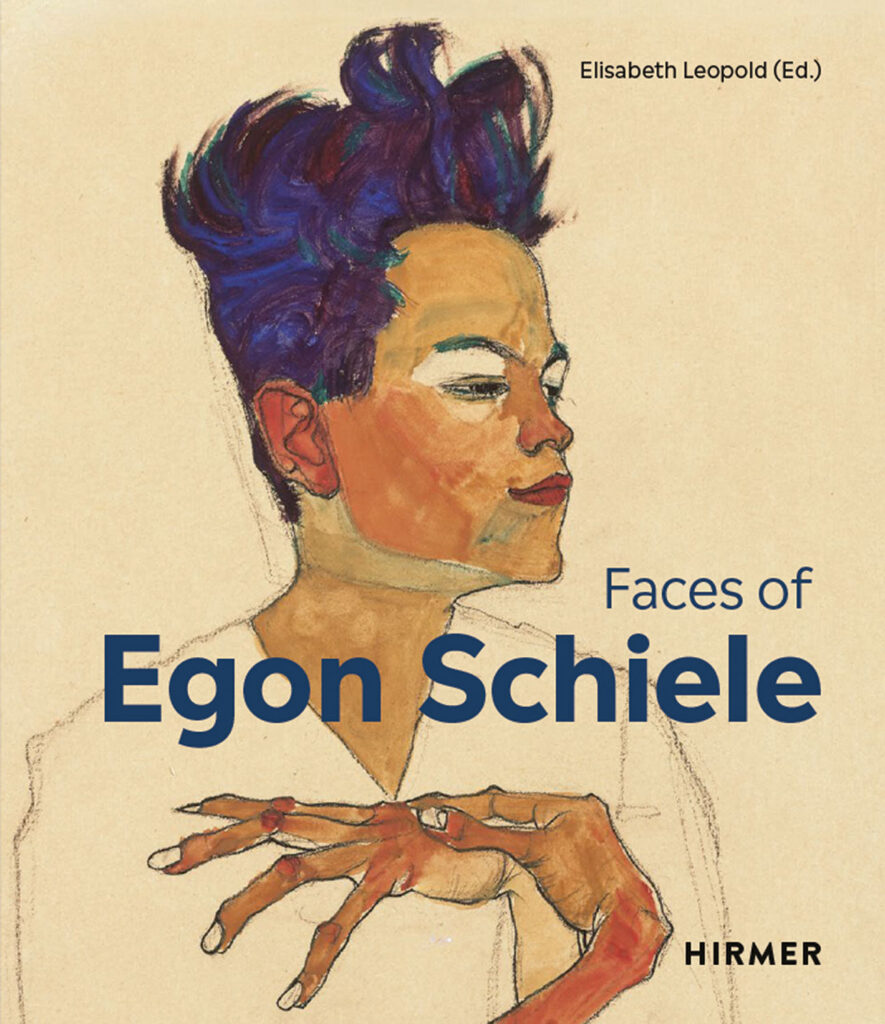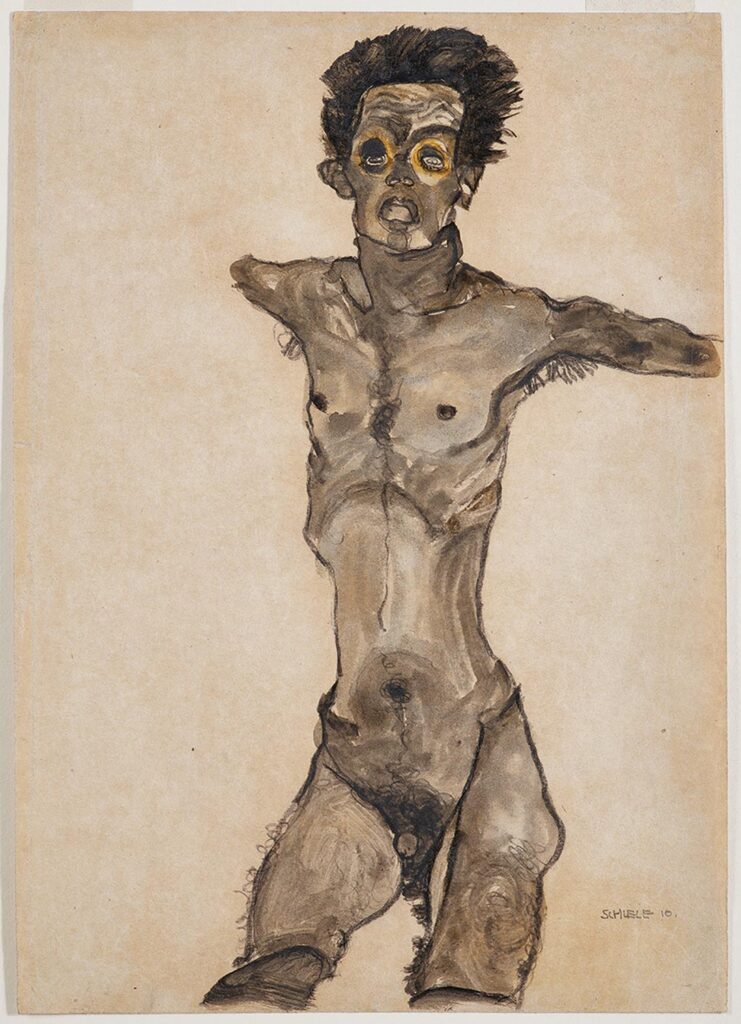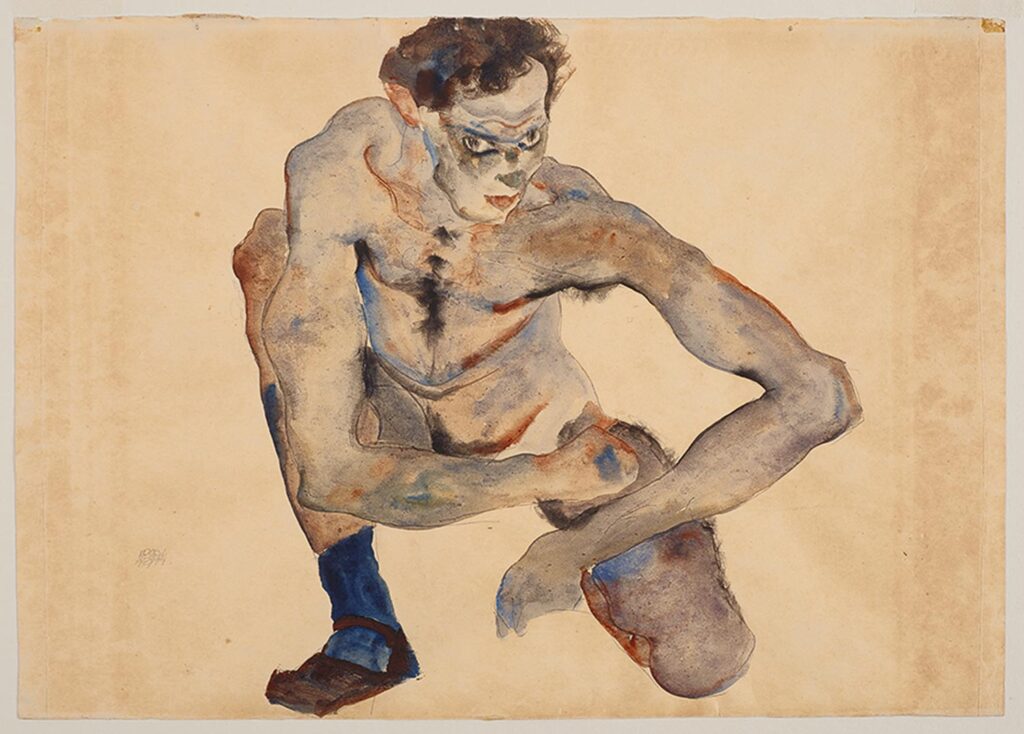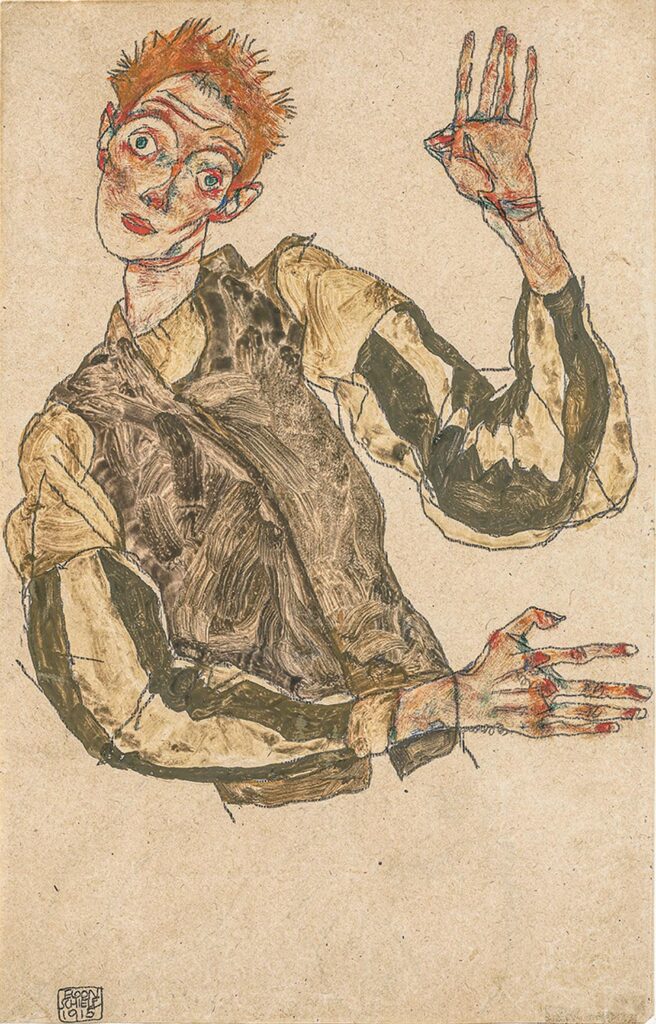
© Hirmer Verlag
A new kind of self-portrait
The book “The Faces of Egon Schiele” introduces the reader to the fascinating world of Egon Schiele’s self-portraits. The Austrian artist, who is known for his intense exploration of the human body and its emotions, used the self-portrait to provide deep insights into his soul. Schiele’s art is characterised by its ability to explore and depict feelings such as isolation, sadness and sensuality. By depicting not only his outward appearance but also his inner feelings and thoughts, Schiele expanded the traditional boundaries of the self-portrait.

Leopold Museum, Vienna
The body as a means of expression
In his self-portraits, Schiele succeeds in capturing emotional and psychological states through the depiction of the human body in a remarkably modern way. In numerous illustrations, the book documents how Schiele used his own body as a means of artistic expression to depict the broad spectrum of human emotions – from deep suffering to ecstatic joy – in a radical and unsparing manner. Through the distortion and caricaturing overemphasis of individual body parts as well as the intensive use of colour and line, Schiele created a new understanding of the self-portrait that goes far beyond traditional forms of representation and opens up a deeper level of emotional expression.

Private collection, Vienna
The Development of an individual style
The authors of the book also trace Schiele’s development from a pupil of Gustav Klimt to an independent artist. Despite Klimt’s initial influence, Schiele succeeded in developing his own personal style, which is characterised by a raw and immediate emotionality. Schiele’s unique approach to art raises profound questions about human existence, identity and sexuality. This examination of his artistic output and his bold thematic choices offers a comprehensive insight into the work of one of the most influential artists of modernism.

Private collection
The revolution of the self-portrait
The book “The Faces of Egon Schiele”, published by Hirmer Verlag, takes an in-depth look at Schiele’s self-portraits and reveals their timeless beauty and significance. It is an impressive testimony to Schiele’s multi-faceted art of depicting deep emotions and complex states of mind. However, the works of art do not only serve the purpose of self-portrayal, but also enable a profound examination of fundamental questions of human existence. The reader is given a comprehensive insight into the role of the modern self-portrait in art and learns how Schiele’s work builds a bridge between individual and collective human experience.
Data
| Title | The faces of Egon Schiele |
| Herausgeber | Elisabeth Leopold |
| Autoren | Elisabeth Leopold, Stefan Kutzenberger |
| Publisher | Hirmer Verlag |
| Cover | Hardcover |
| Pages | 160 pages, 110 illustrations in colour |
| Language | English |
| Dimensions | 24 x 28 cm |
| ISBN | 978-3-7774-4183-2 |
| Price | 35 € |
Further information
Further information on the book “The faces of Egon Schiele” (Advertising) can be found on the Hirmer Verlag website.
Compliance
The book was kindly made available to us by the publisher. The presentation and rating of HYPERMADE remains independent of this and is based solely on the content of the book.
